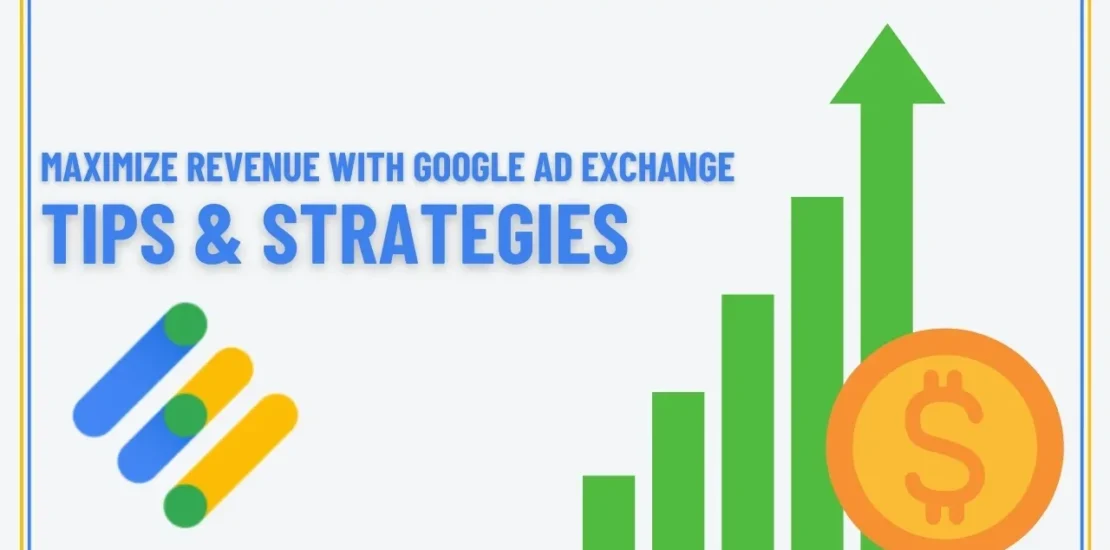How to Maximize Revenue with Google Ad Exchange:Tips & Strategies
- January 24, 2025
- Posted by: Singhanio Sumeet
- Category: Google Ad Exchange

In the ever-evolving world of digital advertising, Google Ad Exchange stands out as a powerhouse for publishers looking to maximize their online ad revenue. With over 15 years of experience in the field, I’ve gathered insights and strategies that can help both new and seasoned publishers optimize their earnings through Google Ad Exchange effectively. In this comprehensive guide, we will explore the dynamics of Google Ad Exchange, uncovering who can benefit from it, what it offers, why it’s essential, and how you can leverage its features to boost your revenue.
Who Should Use Google Ad Exchange?
Google Ad Exchange, or AdX, is Google’s digital marketplace where publishers and advertisers buy and sell advertising space programmatically. It is ideal for:
- Large publishers with significant traffic who require a robust platform to handle high volumes of ads.
- Media groups seeking advanced ad management and optimization capabilities.
- Publishers looking for better control over which ads appear on their sites and at what price.
What is Google Ad Exchange?
Google Ad Exchange is a real-time marketplace affiliated with Google Ad Manager, allowing publishers to sell their ad space to the highest bidder, thus maximizing ad revenue. It connects publishers with a vast network of advertisers, agencies, and networks, competing for ad space in a real-time bidding (RTB) environment.
Why Use Google Ad Exchange?
The primary reason to use Google Ad Exchange is to maximize ad revenue through efficient, automated, and competitive bidding processes. Key benefits include:
- Access to a Large Demand Pool: AdX connects you with a global pool of buyers, increasing the competition for your ad inventory.
- Better Monetization of Non-Guaranteed Inventory: Sell remnant inventory at competitive prices.
- Advanced Control Over Ad Decisions: Utilize advanced tools to control which ads are displayed and optimize ad placements based on performance.
How to Maximize Revenue with Google Ad Exchange
.png/:/cr=t:0%25,l:0%25,w:100%25,h:100%25/rs=w:1280)
1. Optimize Your Ad Inventory
Understanding and organizing your ad inventory is crucial for maximizing revenue. Categorize your inventory into different tiers based on viewer engagement and page content quality. Use Google Ad Manager to set granular controls on your Ad Exchange inventory, ensuring that high-quality ad spaces reach the right advertisers at the right price.
2. Employ Strategic Pricing Controls
Implementing floor prices can significantly impact your revenue. Set minimum prices for your inventory based on historical data and market conditions. Utilize the dynamic pricing feature to automatically adjust floor prices based on demand and supply.
3. Enhance Ad Visibility
Ad visibility directly influences revenue. Optimize your site’s layout to improve ad placement visibility, ensuring ads are located where users are most likely to see them. Implement lazy loading for ads to improve page speed while maintaining ad viewability.
4. Utilize Advanced Targeting Options
Take full advantage of Google Ad Exchange’s targeting capabilities to match your inventory with the most relevant ads. Targeting can be based on demographics, geography, device type, and user behavior, which helps in delivering more relevant ads to your audience, thus improving click-through rates and overall revenue.
5. Explore Real-Time Bidding and Private Auctions
Engage in Real-Time Bidding (RTB) to allow multiple advertisers to bid on your ad space simultaneously, ensuring that you get the highest possible rates for your ads. Consider setting up private auctions for premium inventory to invite selected advertisers to bid, often yielding higher prices than open auctions.
6. Leverage Data Reporting for Insights
Regularly review performance data and analytics provided by Google Ad Exchange. Analyze metrics such as cost per thousand impressions (CPM), click-through rate (CTR), and ad impressions to understand what works and what doesn’t. This data is crucial for making informed decisions about pricing, placement, and targeting.
7. Maintain High Standards of Ad Quality
To ensure a positive user experience and maintain your site’s reputation, it’s crucial to control the quality of the ads displayed. Use Google Ad Exchange’s filtering tools to block low-quality ads or ads from specific categories or advertisers that don’t meet your standards.
Conclusion
Maximizing revenue on Google Ad Exchange involves a strategic approach to managing your ad inventory, optimizing ad placements, pricing wisely, and utilizing the platform’s extensive features. By following the tips and strategies outlined above, publishers can significantly enhance their ad revenue while maintaining a high-quality user experience. As the digital landscape continues to evolve, staying adaptable and informed about new features and best practices in Google Ad Exchange will be key to ongoing success in monetizing your digital content.
Visit: ElseandIf Website
Contact us at the consulting ElseandIf office nearest to you or submit a business inquiry online.
